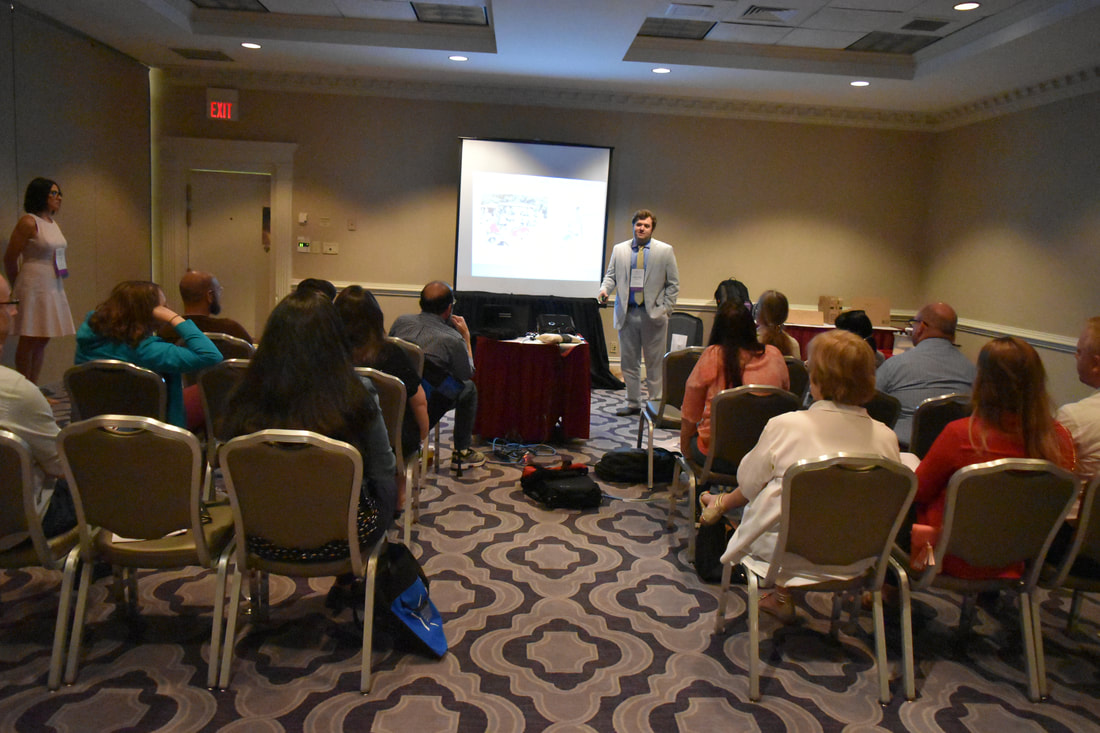Return to Education Newsletter main page! |
Lights! Camera! Action!By Carly Abramson, ISJL Education Fellow
“Lights, camera, action!” In the film industry, these three words, without even trying, demand attention. Whether you are an actor, extra, or the hair and makeup artist, the moment someone calls out those words calls you to be fully present. On a movie set, there are hundreds of people working together towards the common goal of telling a story, and perhaps making a difference in a person’s life. It is important to note that a movie is not solely inspirational because of the movie itself. A movie is equally as inspirational behind the scenes because beyond that big screen are people like us. Movies epitomize the magic that happens as a result of investing your full self into something. As it is an actor’s job to leave an impact on their viewers’ lives, it is our obligation as educators to leave an impact on our students’ lives. Far too often students love watching movies in class, but not for the reasons educators would hope. For some students, watching a movie in class is the perfect opportunity to take a power nap or to check those incessant social media notifications. Part of this disconnect stems from the students’ assumption that watching a movie in class is only a way for the teacher to fill time. While this assumption may be difficult for some of us to swallow, we must recognize that this stigma interferes with the potential for movies to be used as an educational tool. Movies can enrich the content of a lesson for the students because they apply to various types of learners. In the ISJL curriculum, all of the activities in the lessons abide by VAK coding. VAK stands for visual, auditory, and kinesthetic, which are how individuals learn best. Incorporating VAK into your activities ensures that all of your students’ needs are met and that they are learning in a way that they can comprehend. The benefit of showing a film during class is that it encompasses both the audio and visual component which allows the student to see the lesson in action. For instance, it is one thing to have a lecture about the Holocaust, but supporting the lecture with a film that shows the brutality and suffering during that time offers greater depth for the student as they can see what they learned played out in front of them. There are several tips and tricks to utilize movies in a classroom that can counteract the “time filler” stereotype. One method has an interactive worksheet for students to fill in the blanks as they appear in the movie. This keeps their attention on the film, for they have to give their full attention not to miss an answer. Another way to incorporate movies into our classrooms successfully is to be intentional when choosing the film. Why not choose a clip of a popular show or movie that your students would enjoy? Clips are also great ways to keep the students’ attention because some students find it difficult to focus on a full movie. If the lesson is about loving yourself, for example, have a few clips that show what loving yourself and not loving yourself looks like. In between each clip, pause and discuss with your class. A movie in class has the power to bring magic into our lessons if we bring the movie off of the screen. If done correctly, movies can enhance our students’ understanding, therefore be mindful when selecting the film so that it supports your lesson not serves as a break from it. Lights… camera… take action. |
- Home
- WHO WE ARE
-
WHAT WE DO
- PODCAST
- Conference >
- Education >
-
CULTURE
>
- Culture Overview
- Cultural Programming >
-
History
>
-
Encyclopedia of Southern Jewish Communities
>
- Alabama Encyclopedia
- Arkansas Encyclopedia
- Georgia Encyclopedia
- Florida Encyclopedia
- Kentucky Encyclopedia
- Louisiana Encyclopedia
- Mississippi Encyclopedia
- North Carolina Encyclopedia
- Oklahoma Encyclopedia
- South Carolina Encyclopedia
- Tennessee Encyclopedia
- Texas Encyclopedia
- Virginia Encyclopedia
- Encyclopedia Credits
- Oral History
-
Encyclopedia of Southern Jewish Communities
>
- SPIRITUALITY >
- DONATE
- Shalom Y'all
- Strategic Plan
- Southern & Jewish Blog
- Calendar
- Virtual Press Kit
|
©2024 Goldring/Woldenberg Institute of Southern Jewish Life
|

